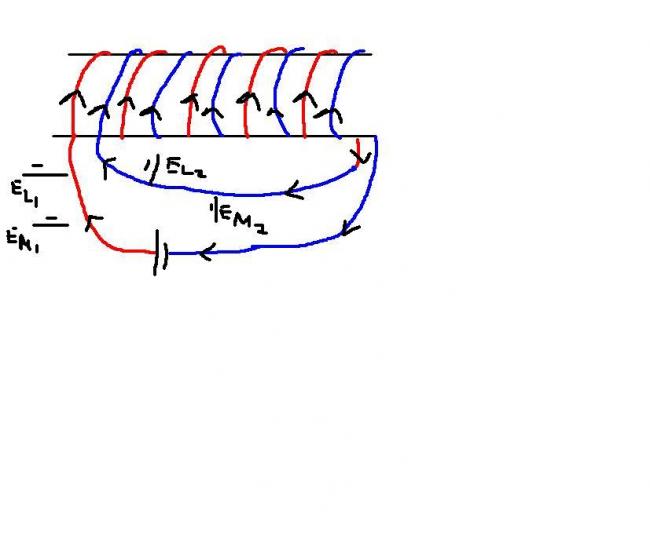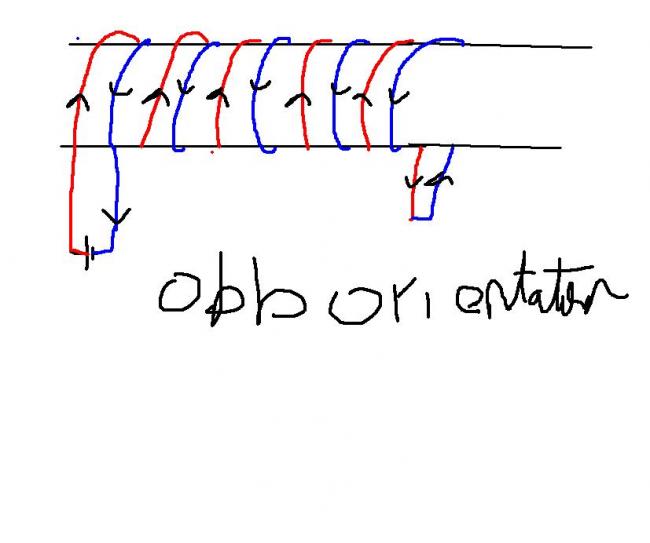1 last thing r u sure v add wen v hav same orientation ...
bcz rtpf doesnt say so ....
there a 2 inductors in parallel L1 and L2 and M12
is the mutial inductance . Find equivalent inductance...
-
UP 0 DOWN 0 0 22

22 Answers
this is not in syllabus...
Eureka:it is not in our syllabus but u should know.......it is called mutual inductance
so why are u all paresaan.. [3]
@ deepanshul i was trying to derive the formula by easier method........
ek doubt hai mera @ eureka .
plz check pic . winding me thoda doubt ahi. is it like what you told ya as in diag ???? coz generally when we connect 2 inductors in parallel or series we neglect the M prt . and treat them as 2 inductors not influencing each other . I mean not interacting .
arey straight wale wire ko consider kyun kar rahe ho ?
main toh solenoid ki baat ki....
are same orientaion means same direction of winding,,,,,,,,,,,here u see ...we started with red wire and we rotated it about core in clockwise sense and after completing one path we changed the wire for mutual induction and we again wound it in clockwise sense........[1][1]
it is not in our syllabus but u should know.......it is called mutual inductance
L=L1+L2±2M
± becoz it depends on winding direction..[1]
But initially before winding the wire(when it was straight...)flux was zero... as A was zero...
thnx ....
but i didnt gt ur fig so well wt do u mean by same orientation ....
wen do v tak - sign
nahi ... main jaha yeh q dekhi thi... waha pe initially bhi switched on hi tha..
i mean current was flowing ...
length should decrease... but if it is tightly wound then no option for its further decrease.. (parallel current attracts..)
But if we think like this...
initially no current... so flux =0 so when i is switched on flux increases... so by lenz's law it tries to decrease the flux...
net Flux=μN2Ai/L
so it opposes current... but it can also decrease area... but then N increases and L increases..
so increase in L and decrease in A favors decrease its flux but N increases...which will increase flux... so we(or better say I) can't say anything....
i am confused.. [2]
answer for ur derivation for formula will come from correct drawing of induced emf...........
here is for same orientaion
if u understand this then i will explain for opp orientation
i was tryin 2 derive was askd in rtpf as an obj ques....
i cud rite the eqn but made a small mistake....
wanted 2 clarify that
so can u plzz explain how do v get that result
its length dec bcuz parallel currents attract each other
@eureka even i noe the result but + - how do v decide wich 1 is 2 b taken
ok me adding up a question here:
if a wire is wounded like a solenoid,,, and current is passed through it..
what do u think will happen to the solenoid?
1) its length decreases
2) length increases
3) remains same
4) solenoid unwinds by itself and becomes a straight wire [3]

